Due to the taste contamination of beer by tiny concentrations of iron, it is necessary to protect beer cans against this form of spoilage. In order to guarantee protection of the packed product (beer, cola, etc.) from iron contamination (often referred to as iron pick up), the internal coating is applied twice, wet on wet, or wet on dry, to steel cans. The contamination problem is less pronounced with aluminium cans, therefore the industry applies a single coat to aluminium cans. The type of products packed are split into two groups, beer and soft beverages. Beer is considered to be less aggressive and less corrosive than soft drink beverages.
These factors manifest themselves in practice through the dry film weight required to protect the can as shown in Table 7-16. The two most common sizes of can are shown.
|
TABLE 7-16: DRY FILM WEIGHTS FOR ALUMINIUM AND STEEL (ETP) DWI CANS FOR BEER AND SOFT DRINKS
|
|
50 cl cans |
Beer |
Soft drinks |
|
Aluminium |
180 mg |
210 mg |
|
ETP steel |
2 x 180 mg |
2 x 200 mg |
As stated previously, the technique used to apply the lacquer to the cans is airless spray. Unlike air assisted spray application, this technique allows a finely atomised spray to be produced and therefore greater control over the lacquer application. In order to successfully apply a can using this technique, three parameters must be considered before the lacquer is applied, can type, required coating weight and finally the nozzle type to use. The first consideration has to be the can type, steel or aluminium, necked or unnecked, beer or soft drinks. The substrate will determine the type of lacquer formulation required. Most internal lacquers are formulated slightly differently for steel and aluminium cans, although there is a desire for a universal lacquer formulation, from the canmakers. The category of can also determines the coating weight and dry film distribution required, which in turn determines the nozzle type(s) to be used. Nozzles are graded by the flowrate, and angle of the fan delivered. Each nozzle manufacturer (e. g. Nordson, Delevan, Spraying Systems) has a range of flat spray nozzles which will deliver lacquer at a set flowrate, and a set angle to the fan pattern. The application technique applies the lacquer at very high pressures (50-70 bar, 800-1000 psi) through a tungsten tipped nozzle to the interior of the rotating can. The fan pattern can either be symmetric or asymmetric ( see later). The type of nozzle chosen will define the angle, distance, and the height of the spray gun, and hence the nozzle, in relation to the can as shown in Figure 7-26. The nozzle is chosen on the amount of lacquer to be delivered to attain the correct dry film weight and distribution. Originally spray gpris and nozzles entered each and every can ( eg Lancing type spray ). However the time taken for insertion and withdraw, severly restricted the number of cans which could be sprayed every minute. Modem DWI lines have the spray guns and nozzles external to the can. They do not enter the can, hence significantly more cans are sprayed every minute.
|
Figure 7-26: Spraying a Can with Internal Lacquer |
Table 7-17 lists a sample of the typical specification for a ‘Spraying System’ flat spray nozzle.
|
TABLE 7-17: ILLUSTRATION OF NOZZLES AVAILABLE FOR INTERNAL SPRAY APPLICATION
|
The decision has to be made whether to apply using a single spray gun (i. e. one nozzle), or a two gun (two nozzle) system. Generally aluminium cans are sprayed using a single gun setup and steel with a double gun system, however the system used will depend on the coating requirements. At a manufacturing rate of 1000 to 2000 cans per minute, the application window in front of the nozzle is limited (maximum 150 — 200 mS). The application time is selected so that the lacquer is applied within this window. Also within the application time selected, the can should execute 2.5 rotations to ensure complete coverage around the can. Care is required to select a nozzle with sufficient flowrate (ml/min.) to allow application of the required coating weight within the application window, and the can rotation required. The angle of the fan should permit the lacquer to be applied over the area of the can requiring coating. The top cut edge of the can must be coated to stop any contact with its contents when filled and seamed.
In a single gun application the nozzle is required to deliver the full coating weight to the can, the angle of the fan pattern must be capable of applying lacquer just above the can dome centre, and along the length of the can, allowing for an overspray (minimum) in order to ensure coverage of the can edge as shown in Figure 7-27.
Nozzle: 500033 (Spraying Systems) Height: 30mm Distance: 35mm Gun angle: 25°
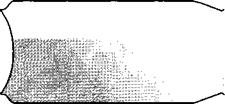 %
%
Figure 7-27: Single Gun Application
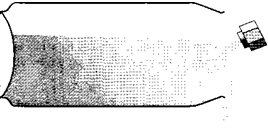 |
 |
For a twin gun application technique, shown in Figure 7-28, the first nozzle applies lacquer to the dome and lower side wall of the can, whilst the second nozzle applies lacquer over the dome, and along the length of the can. Again, the second gun is set up to overspray the can edge. The ratio of the applied film weight split between the first and second nozzle should reflect the area of the can each gun and nozzle covers.
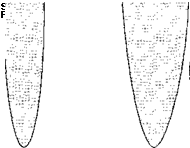 |
In both cases the distribution of the internal lacquer can be regulated by adjustment of the gun angle or, more usefully, the choice of a nozzle with an asymmetric fan pattern. The standard symmetrical nozzle exhibits an even distribution of lacquer to the extent that the direction of the nozzle in relation to the can is in effect unimportant as long as it is perpendicular to the open end of the can. This is shown in Figure 7-29.
Figure 7-29: Spray Patterns — Symmetric and Asymmetric.
The asymmetric nozzle as would be expected, exhibits an asymmetric lacquer distribution (also shown in Figure 7-29), where the fan pattern displays a higher flowrate end and a lower flowrate end. The asymmetric nozzle should be set to apply the higher flowrate end to the lower side wall area of the can, (i. e. it should be uppermost to the can).
The difference between ideal and actual coverage for spray applied DWI internal lacquers is shown in Figure 7-30. As can be seen, the actual coverage is far from ideal.
|
Ideal Coverage of Sprayed Can
|
|
Figure 7-30: Difference Between Actual and Ideal Spray Applied Internal Lacquer |
 11 октября, 2015
11 октября, 2015  Malyar
Malyar 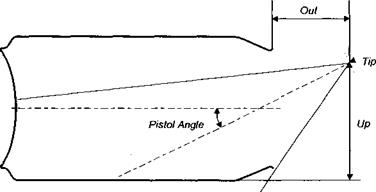
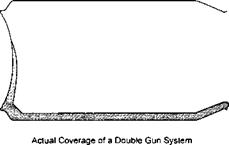
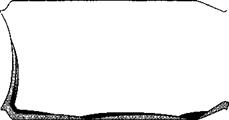
 Опубликовано в рубрике
Опубликовано в рубрике 